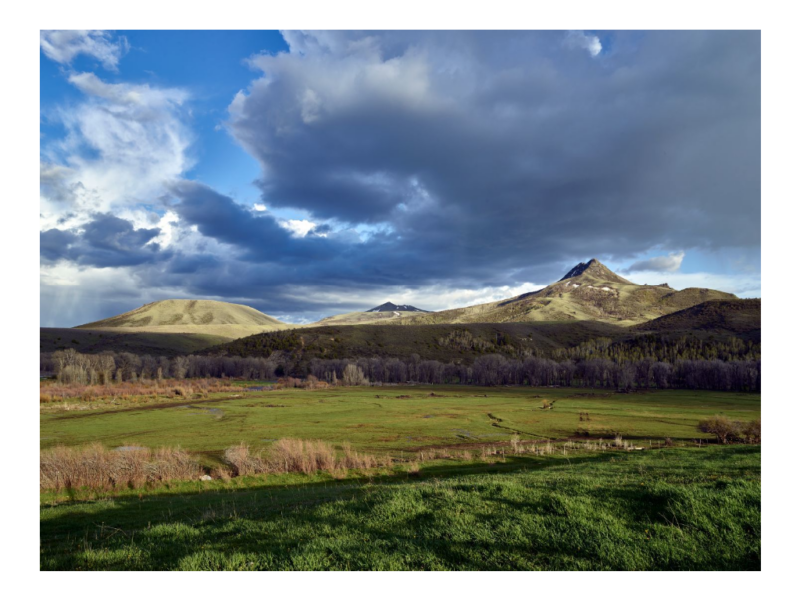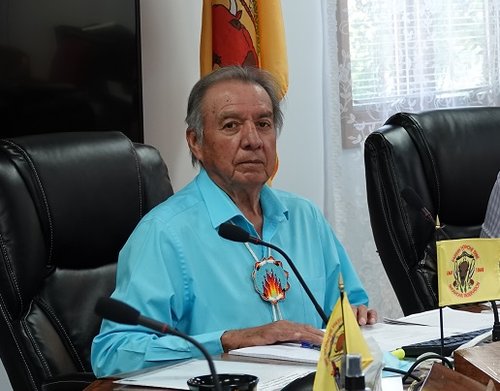Geographic Features Across Wyoming Get New Names
Federal effort removes slur from names of mountains, mesas and other features nationwide
- Published In: Other News & Features
- Last Updated: Oct 04, 2022

Wyoming's Sq_ Mountain is being renamed through a federal initiative to remove a derogatory term for Native American women that appears on geographic features nationwide. (Courtesy photo from the Library of Congress)
By Kristi Eaton
Special to the Wyoming Truth
Forty-one geographic features across Wyoming are being renamed as part of a federal initiative to eliminate a term that has been used as an ethnic, racial and sexist slur, particularly for Indigenous women.
The U.S. Department of the Interior recently announced that the Board on Geographic Names had voted on the final replacement names for nearly 650 geographic features on federal lands featuring the word sq___.

“I feel a deep obligation to use my platform to ensure that our public lands and waters are accessible and welcoming,” said U.S. Secretary of the Interior Deb Haaland in a statement. “That starts with removing racist and derogatory names that have graced federal locations for far too long.”
Haaland, a member of the Pueblo Laguna, is the first Native American to serve as a cabinet secretary.
Tyler Cherry, spokesperson for the Department of the Interior, said the decisions of the Board on Geographic Names are effective immediately.
“All name changes will be reflected in the Domestic Names Geographic Names Information System (GNIS), the authoritative federal database,” Cherry wrote in an email to the Wyoming Truth. “Federal agencies rely on the GNIS for the publication of map products or other services. Often, private mapping companies (e.g., Google Maps, Apple Maps, Esri) use GNIS, but they are not required to do so. Federal map products will be updated by each relevant agency according to their own schedule of activities.”
The list of new names can be found on the U.S. Geological Survey website, along with a map of locations.
Feedback from Native Americans in Wyoming
The Native American Rights Fund applauded the initiative. “It is well-past time for us, as a nation, to move forward, beyond these derogatory terms, and show Native people—and all people—equal respect,” said executive director John Echohawk in a statement.
Democrat Lynnette Grey Bull, who is seeking to be the first Indigenous person elected to represent Wyoming in the U.S. House of Representatives, called the change a step in the right direction.
“I think when we talk about equality, and in being inclusive, and being fair, and understanding that 50 to 100 years [ago], when some of these names were brought about, that times have changed,” she told the Wyoming Truth.
As an Indigenous woman, Grey Bull said the derogatory name not only hurts how the Native American community is viewed, but it also hurts the movement surrounding Missing and Murdered Indigenous Women.
“Having these discriminatory names be removed from our communities, whether it’s a street, a hill or national park, I think that also helps with the imagery that people have, especially for Native American women,” she added.
Joshua Mann, director for the Eastern Shoshone Tribal Historic Preservation Office in Fort Washakie, also supports the name change.
“Growing up, I used to hear stories from different Elders recalling derogatory signs about ‘Sq___’ being posted in different towns and the many hardships that Native women had to endure throughout history—a history that we can no longer ignore,” Mann told the Wyoming Truth. “If you were a student and doing a research assignment on Sacajawea, all you would find in historical journals is her being referred to as ‘Clark’s Squaw.’ That certainly needs to be addressed.”

John St. Clair, chairman of the Eastern Shoshone Tribe, echoed that sentiment: “It is wonderful news that these derogatory names will no longer be utilized. Some are outright vulgar, while others degrade our female tribal members.”
Not all Indigenous people in Wyoming support name changes. Madeline Day, who is Eastern Shoshone and lives in Ethete, doesn’t believe the word is meant to be derogatory.
If Native Americans “would look at their language or they knew their language well, they would know that sq___ was used by all the tribes,” Day said. “And it was spelled many, many different ways depending on which tribe it was from. And all it meant was woman. The only tribe that used it in referring to a female part was Mohawk, which wasn’t used in a derogatory manner.”
As for renaming creeks and roads that feature the term, Day said: “That’s totally unnecessary.”
Yellowstone National Park’s history with name changes
Shelley Messer, executive director of the Wyoming Board on Geographic Names, said officials identified features bearing the offensive term and then identified four or five surrounding features to develop appropriate replacement names.
“They went with those names, whether it was like Cottonwood Creek or something like that,” she said. “And then from that list, they narrowed it down to whatever that feature was. So if it was a mesa, and the closest one was Cottonwood Creek, then they named it Cottonwood Mesa.”
In 2019, the Rocky Mountain Tribal Council brought forth a proposal to rename two features in Yellowstone National Park, Messer noted. Mount Doane, a 10,551-foot peak located east of Yellowstone Lake in the southeastern portion of the park, was renamed First Peoples Mountain. It was previously named after Gustavus Doane, a key member of the Washburn-Langford-Doane expedition in 1870 before Yellowstone became America’s first national park.
Research has shown that earlier in 1870, Doane led an attack, in response to the alleged murder of a white fur trader, on a band of Piegan Blackfeet. During what is now known as the Marias Massacre, over 150 Native Americans were killed, including many women, elderly Tribal members and children suffering from smallpox. Doane wrote fondly about this attack and bragged about it for the rest of his life, according to the National Park Service.
In another case, the Wyoming board voted to retain the name Hayden Valley for a large valley in Yellowstone National Park straddling the Yellowstone River between Yellowstone Falls and Yellowstone Lake.
“[Ferdinand] Hayden was part of the geological survey team, and while people on that team may have been racist and terrible, there wasn’t enough documentation to support Hayden’s position,” Messer said.
The park service may still decide to change the name in the future if sufficient documentation is found, she added.













